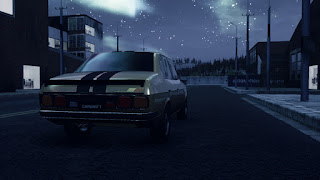Confessions of an Automationeer, Part 37: Unreal Problems... Fixed
Having had the UE4 version of Automation for almost a year, I can now safely tell you that, after months of coping with random crashes, annoying bugs and many other inconsistencies, it is now running as smoothly as I want it to be. For starters, saving a car or engine no longer causes the game to suddenly crash, eliminating a major point of annoyance for users. Moreover, creating new cars and engines no longer leads to a blank screen, at least for the majority of users (including myself). Finally, some of the previously glitched car bodies and exterior fixtures are now working properly, while many new bodies and fixtures have also been added (either by modders or by developers) in response to complaints that there is still less content overall compared to the original Kee engine version. Even better still, the introduction of hitherto unavailable material, chassis and suspension choices, in addition to changes in the years in which certain items are unlocked, has allowed for many new possibilities when creating new cars.
Thanks to the welcome contributions of modders and developers alike, there are now more bodies to choose from than ever before in the latest UE4 build, although some omissions remain.
Equally significant is that the competitiveness values for a given demographic are more representative of a car's stats than they once were. Many demographics now penalize cars for not having the right body and/or amount of seats. For example, buyers from the supercar and hypercar demographics strongly prefer cars with just two seats and lots of sportiness (as is the case with , while delivery vehicles are more competitive if they use a van body style, and convertibles get a competitive boost for any demographic with the word "convertible" in it. Other changes include premium demographics putting a stronger focus on comfort, and the introduction of a Passenger Fleet demographic, which has a strong preference for large, reliable and practical vehicles in taxi or company car roles.
As shown from the competitiveness chart above, cargo vans make great delivery and utility vehicles, but are not very good at anything else.
On top of that, two additional regions have been added recently. The first one, Hetvesia, is a relatively small region with mountainous terrain and a general preference for comfortable, prestigious cars, with relatively little consideration given towards sportiness. The second one, Dalluha, is an even smaller, oil-rich former province of Archana that doesn't even exist in-game until relatively modern times; its people are so wealthy that they have little interest in cheaper cars and tend to focus on the expensive stuff, especially supercars and hypercars. Both regions are also present in the light campaign, and as such this provides more possibilities when building and selling your company's cars.
Why are the cam covers always red now? They used to be yellow before...
Some problems remain, however. First and foremost, many of the car bodies already present in the Kee engine version (either by default, or as downloadable mods) have yet to be converted to UE4, although this will surely be rectified over time. Moreover, cloning a trim or variant still requires one to exit the designer and click on the corresponding button, which is more time-consuming than the Kee-era method of clicking on the clone button in a drop-down list, although to be fair, this is a minor inconvenience compared with the litany of bugs that plagued earlier UE4 builds. Last but not least, building a turbocharged engine without an intercooler, or any kind of supercharged engine, is still not yet possible, as is changing the color of the cylinder head covers. Considering that all of them (with the exception of supercharging) are possible in Kee, this is a glaring omission.
Even so, the UE4 version of Automation has been improved overall to such an extent that I consider it a more than worthy successor to the Kee engine version that it replaces. And, in the coming months, it is expected that further improvements (such as additional content and balance changes for certain aspects of the game) will enhance the experience even more for us Automationeers. Until then, enjoy the extra variety, and use it to your advantage.





















